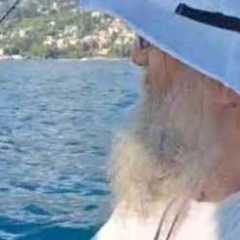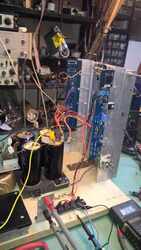Najbolji članovi
Popularan sadržaj
Showing content with the highest reputation on 12/27/18 in Postovi
-

Lepota dizajna
Srecko i jedan drugi je reagovao/la na guja011 za temu
nije bolesno nego slojevito. ko da dizajnirala nada macura2 poena -

SissySIT (bilo SufiSIT)
Dual i jedan drugi je reagovao/la na Leonardo za temu
2 poena -

Thorens Restek V1 preamp
revox i jedan drugi je reagovao/la na Mikorist za temu
2 poena -

ZM, random zanimacije
Srecko i jedan drugi je reagovao/la na Mikorist za temu
To ko uvod u moju autobiografiju2 poena -
2 poena
-
1 poen
-
ono, kad bi se sve radilo prema nekom projektu, izgubila bi se draz. Zavrsis posao i onda se macujes sa onima koji kupuju gotove kutije, uredjaje... Elem, nema tu zabave stigne panasonic mic, osposobim to... onda ce da se igramo sa ovim... Time alignment Get the background here from Wikipedia 1. To find out the difference in acoustic distance of the two drivers (mid and tweeter) we can do this: We place the microphone at 1 meter distance and record amplitude and minimum phase for both drivers and finally the summed response (impedance data not needed here). It is important the microphone is not moved at all during these measurements!! 2. Next we take the CLIO data files to LspCAD6 software and simulate a 3-way crossover with tweeter, mid and summed response as the three drivers. The measured summed response is disabled in the SPL/Xfer function, thus does not add to the total summed response. This will produce 4 graphs, tweeter, mid, mid+tweeter and summed response of mid+tweeter. 3. Finally we change dZ for middriver until summed response coincides with mid+tweeter response at suggested point of crossover, because what we also find is that the dZ is not consistent with frequency. Usually a middriver will change its phase behavior because not all parts of the cone may produce the same frequencies. At higher frequencies it may only be the center of the speaker, e.g. dust-cap, that does what it should do. Once done we can start simulating our crossover with the correct dZ, here 0 mm. Quite unusual, but this was a coaxial driver. For the standard 5"+1" or 6"+1" we find something in the range of 20-30 mm. Above we see the response of individual drivers and summed response. Green is midbass, red is tweeter. Orange is summed response of the drivers driven in parallel. Blue is the summed response (calculated, not measured) from bass and tweeter. By changing dZ (see graph below) for the midbass we can set the acoustic distance between the two drivers until their summed response coincides with the measured summed response (blue). Between the two black vertical lines the two summed response graphs are coincident. As can be seen the two graphs coincide between 1,600 and 4,000 Hz - and fairly well way above and below. Actually the phase difference @ 1,000 Hz i only 17 deg. Above the driver window inserted, displaying dZ for the midbass driver (encircled). Usually from a flat panel we have to insert some 20-30 mm here to make sure we simulate crossover that will also work when we start constructing the crossover. 20-30 mm is the distance the midbass driver is behind the tweeter when we mount them on a flat baffle, hence many of my recent constructions feature stepped baffle to time align driver and allow preferred crossover. On a flat baffle we often use asymmetrical crossover to compensate for the time difference. To my experience a true 2nd order filter from time-aligned drivers sound better than the typical 2nd/3rd order filter - and it requires fewer capacitors in series with the tweeter, certainly an advantage. To some extend the difference in acoustic depth can be compensated by using a sloped baffle, but this requires good off-axis response from both mid and tweeter and usually leaves a more narrow vertical listening window. Bass-mid alignment, does it matter? Above a ScanSpeak 18WU/8741T00 and a 12WU driver (not yet released from SS). dZ is set to zero and all the way up to above 2 kHz we really do not see a difference in measured summed response and predicted summed response. Above the same exercise with 12WU offset by 20 mm. Really doesn't make any difference. So, making a stepped baffle for a bass and mid crossed at 500-1000 Hz doesn't pay off.1 poen
-
1 poen
-
cuj 300C na guzzija ... kako on vozi i 50C je puno osim ako napolju nije 48C1 poen
-
1 poen
-
@shonne msm , ne bih ja komentarisao ....... ne vredi ni ono BS dugme potezati1 poen
-
e da , zaboravih reci , ninjini Cinemagi su custom- hinickel, srebrna zica1 poen
-
e tacno cu i ja da se bacim u trosak i kupim HiNickel1 poen
-
Neskore , platna na IRFP mora biti duplo veca , cak i kad je u pitanju samo test postavka Ne zaboravi i feder platne , one su obavezne kod svakog spoja koji ima termicki cycle ...... vazi za tranzistore a bogumi i za Graetz na dnu kutije Nisam jedan promenio na razglasnim ampovima jer su bili otpusteni i pregrevali se ....... a par Pass klonova mi je proslo kroz ruke sa crknutim Graetzom iz istog razloga1 poen
-
1 poen
-
Da lakše menjaš opampove kad ti pregoru1 poen
-
Poslije upgrade riaa definitivno radim bolje napajanje ... I mislim da cu tu za sada stati ... mozda ptomjena postojeceg opampa sa istim takvim nekog drugog proizvodjaca I novije produkcije ako ima efekta1 poen
-
cekaj , tek se zaukavam cu razvijem i Pravoslavni Tannoy box obavezno od sirove iverice (oblozeno zidnom tapetom) , a naravno i skretnica na iverici kako drugacije1 poen
-
Ja sam probao u dva MM phono-a da NE5532 i 5534 zamenim boljim > LME49710 i LM49720 (probao sam i još neke, ne znam sad brojeve) i na kraju sam vratio kako je bilo predviđeno... Nekako mi je bolje, tj. kao da muzika teče prirodno, ne umem da objasnim... Želim ti da nađeš ono što ti najviše prija i da onda samo menjaš igle...1 poen
-
Miko, pa tome sluze prijatelji, kad zagusti, pa treba nesto da se vari, ovaj, zavari...1 poen
-
Moram da dodam.... Zen je bio uz mene kad mi je bilo najteže.1 poen
-
Za sad nista ne diram na Sara-ma, zuvk je po meni okej, ako se odlucim da ih zadrzim onda eventualno ide zamena...da li kalota ili celog visokotnca.1 poen
-
NE5534 je veoma star dizajn koji često zahteva komponente spoljašnje kompenzacije. Često zahteva znanje a i ubeđivanje da bi se održao odnosno ne oscilovao i bio stabilan. OPA1611/1612 je interno kompenzovan i u principu, mnogo lakši za upotrebu. Međutim, njegov propusni opseg je mnogo veći od NE5534. U zavisnosti od primene i opterećenja , može se ponašati drugačije u kolu. Što bi rekli u žargonu ovde - oduvao bi NE5534 . . .1 poen
-
1 poen
-
Fino, fino Ko je onaj bradonja sa dugom kosom? A Pedja se vratio sa rakete1 poen
-
1 poen
-
1 poen
-
0 poena
-
Trenutno na sajtu 1 član, 0 Skrivenih, 81 Gosta (Pogledaj celu listu)
-
Forumska statistika
9.1k
Ukupan broj tema446.9k
Ukupan broj objava -
Statistika članovȃ



















